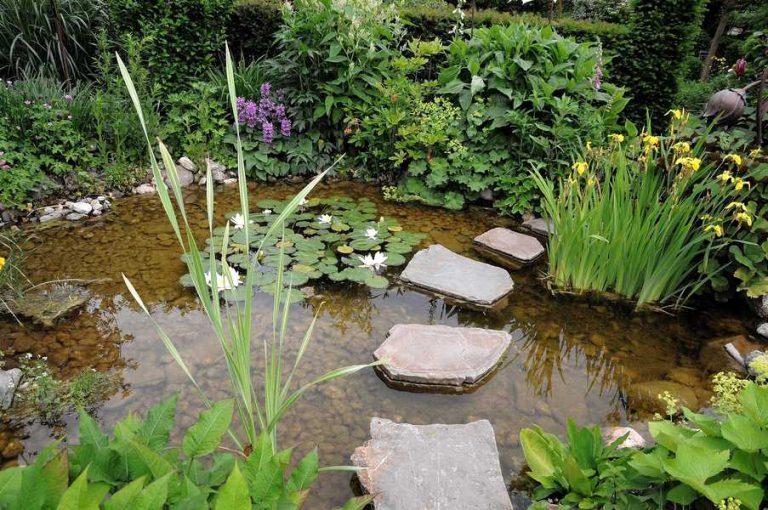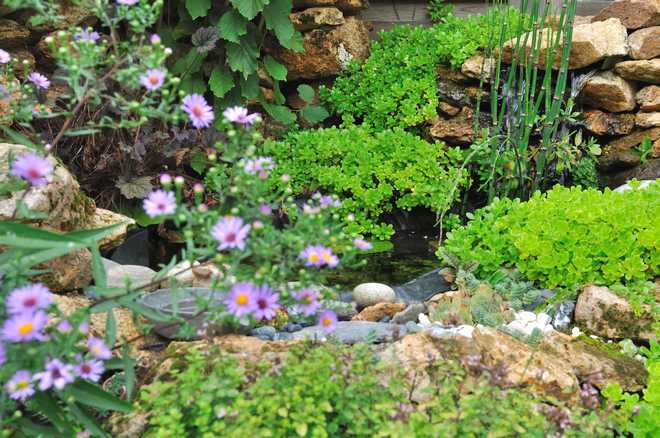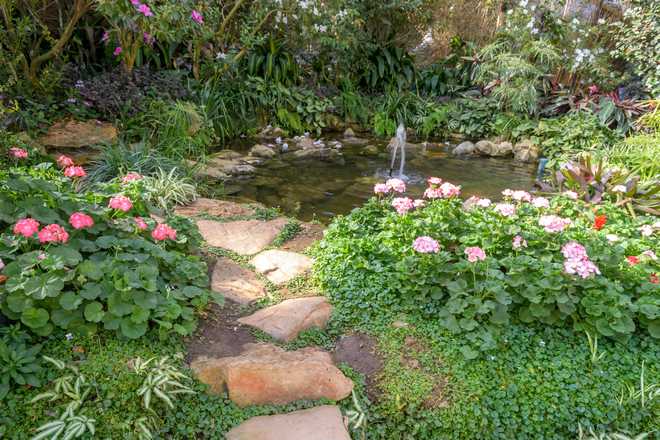
Has anyone ever dreamed of letting themselves be lulled by the sound and movement of water flowing among the shrubs? If your garden is not crossed by a small natural river, know that it is possible to create one artificially. The most difficult thing is then to avoid pharaonic works!
Take advantage of the slope of your garden
To make an artificial stream , you must take advantage of a natural slope , even a slight one. If your garden is flat, it is better not to consider your project because the earthworks to completely remodel it will quickly weigh on your budget and above all, they will make no sense from an ecological point of view.
The water circulates in a closed circuit
An artificial stream operates (see details below) in a closed water circuit . The ideal is therefore to dig 2 small basins, an upper and a lower part, between which your stream will flow.
The small stream will thus originate in the upper basin and will end its course in the lower basin. A submerged pump will take care of pushing the water from the bottom upwards.
How long should the stream be?
It all depends on the budget allocated to the realization of your project. If, in practice, your stream can reach several tens of meters , the water losses (risk of leaks, evaporation, etc.) are significant and therefore require you to monitor the water level very regularly and to add more as soon as it’s missing.
In all cases, the installation of a PVC tarpaulin on the bottom is essential to prevent water infiltration into the ground. A bed of pebbles and sand then conceals it.
To bring freshness to a small garden, it is possible to dig a smaller stream , or even a miniature stream in some cases!
A stream perfectly integrated into the garden
To give your stream a natural look and make it look like it’s been there for a long time, just like in nature, vary its depth and width. You can build narrow, shallow areas near the start to create current and the water to pick up speed.
Lower down, widen the creek and plan for more depth so that the water calms down and flows peacefully.

Develop the banks of the stream
The plants also contribute to creating a natural atmosphere to the point of making people believe that the river has always existed.
What plants to plant on the banks? The gunnera is a majestic plant when it is installed on the bank of a stream, water lilies can live in the deeper areas.
Play with a wide variety of plants: lotus, water lettuce, water beetle; Hostas, spurge, lady’s thumb on the banks.
A stream full of life!
In order to bring some life to the different parts of this artificial river, you can introduce goldfish and koi carp.
Spontaneously, frogs, toads, as well as different species of damselflies, dragonflies and insects, sometimes even grass snakes will later appropriate this living space. You will be surprised at the biodiversity that settles around a watercourse.
The soothing sound of water
In order to get the characteristic sound of flowing water, create artificial dams by laying large stones across the stream.
At this place, a bridge will allow you to appreciate all the beauty of your watercourse. Make it, for example, with wooden sleepers and wrought iron railings.

How an artificial stream works
Be careful, before you start, be aware that your site can quickly grow and become pharaonic!
Materials to provide
Quantities will depend on your project
- Black PVC liner or tarpaulin
- Pebbles of all sizes
- gray river sand
- Shoreline and aquatic plants
- A submerged pump
- PVC ducts diameter 80 (power supply and water discharge).
Earthworks
A large basin (A depth of 1.20 m to 1.40 m is sufficient) located in the upper part of your land can serve as a starting point and reservoir to feed your stream. Dig it with a mini digger.
Arrange the edges in stages in order to be able to install the aquatic and bank plants. Similarly, dig a second pond at the lowest point in the garden.
The main difficulty is then to dig the total length of the river. If the garden is not yet landscaped, these earthworks can be carried out with a small digger.
But if your garden is older or you cannot get construction machinery into it, you will have to dig it by hand so as not to destroy the shrubs and the landscaping already made.
Remove all the stones, level the bottom well, and finish the earthworks by smoothing the walls before laying a black PVC liner. This is an unobvious step.
Finally, arrange the stream bed with pebbles and sand as naturally as possible.
Installation of the water circuit
To raise the water from the lower basin to the upper basin, a corrugated PVC pipe with a diameter of 80 mm is sufficient. It is available in long lengths (50m or 100m), so you avoid fittings and part of the leak problems.
Run it to the edge of the stream from the bottom basin.
A 30,000 l/h submerged pump ensures water circulation. It is necessary to plan to supply it with electricity in complete safety by pulling a cable from the house or a garden shed. This pump must not be too powerful so as not to disturb the balance by a too strong jet.
A bubbling is sufficient to oxygenate the water and create a minimum current.
Despite all the care taken in the work, the seal is never perfect. Water losses due to small leaks or evaporation are compensated for most of the year by rainwater, but regular supply of water from the network can be made in summer.
Should the water be treated?
You will normally not need to treat the water. Indeed, a biological balance generally settles all alone. The water remains clear without having to resort to an artificial mechanical filter, especially if its volume is large.
3 elements must be respected:
- The oxygenation of the water must be permanent.
- If they are numerous, fish can be sources of pollution. Limit their population, then they only need to be fed occasionally while still being able to fend for themselves.
- Aquatic plants are interesting because they take care of eliminating excess nitrates.
If you can achieve this balance, the only maintenance for your stream will be regular cleaning of the pump strainer to remove the impurities that accumulate there and to remove the silt that can accumulate at the bottom of the deep areas.
